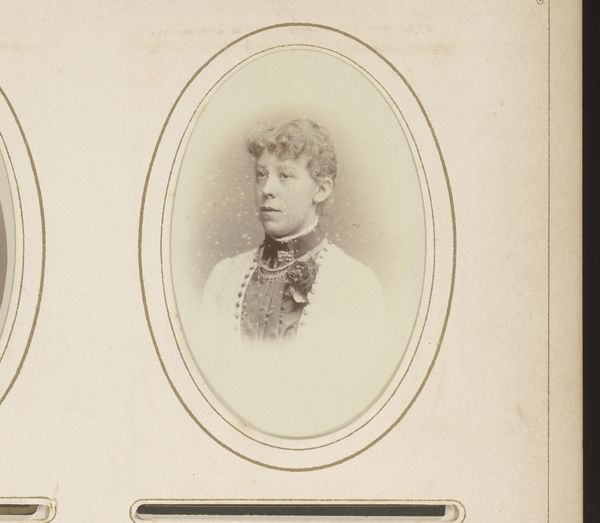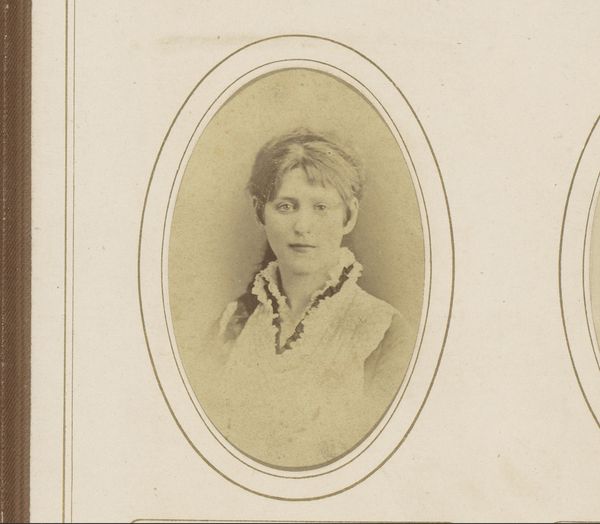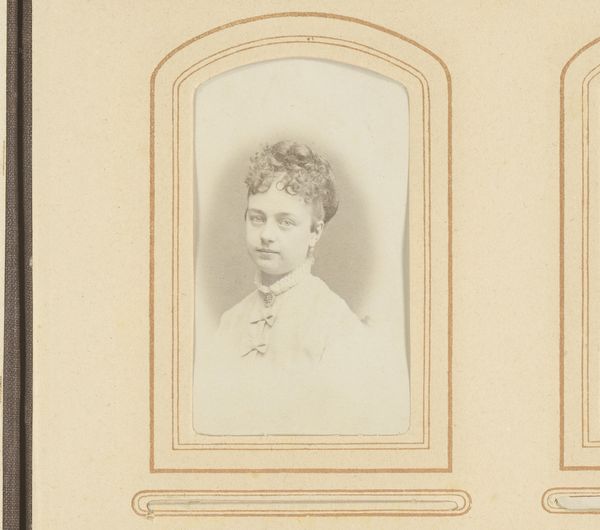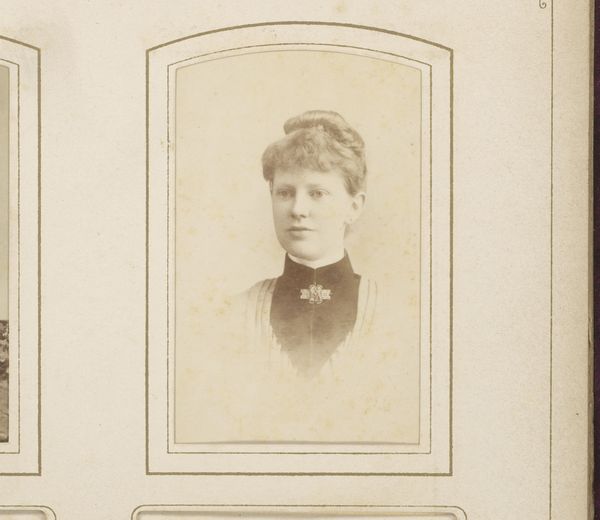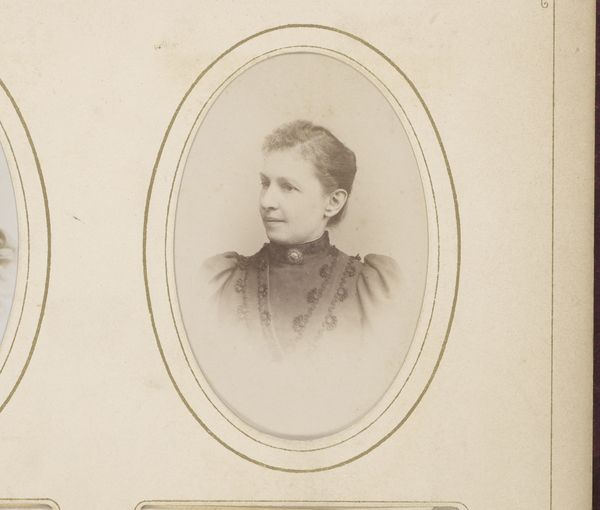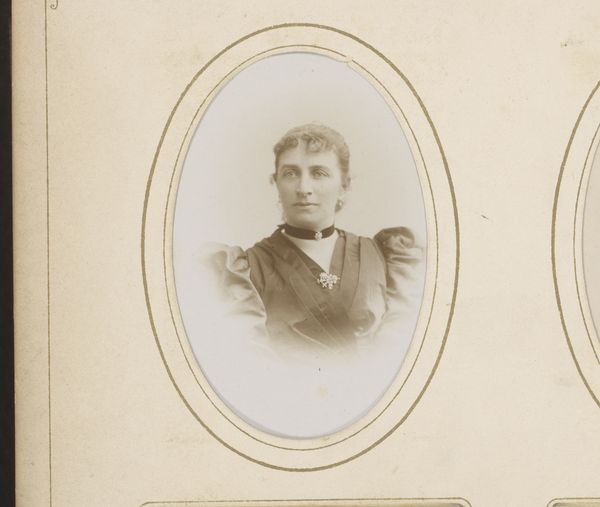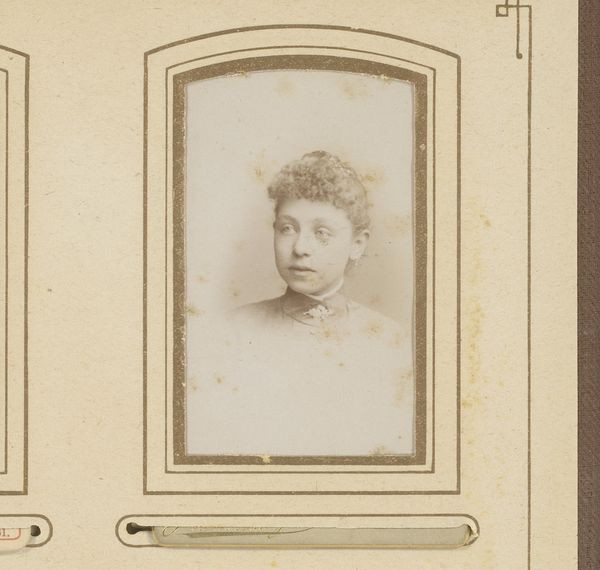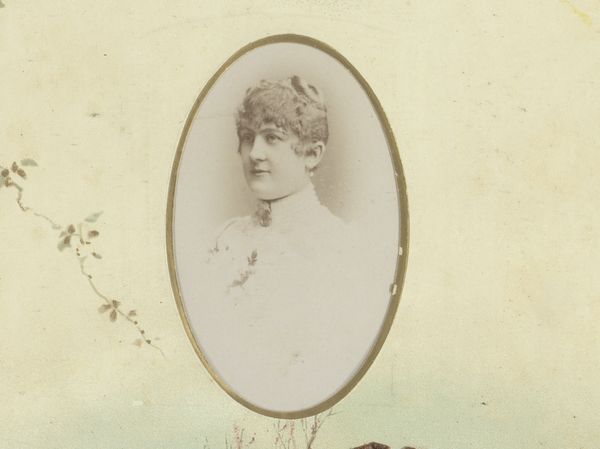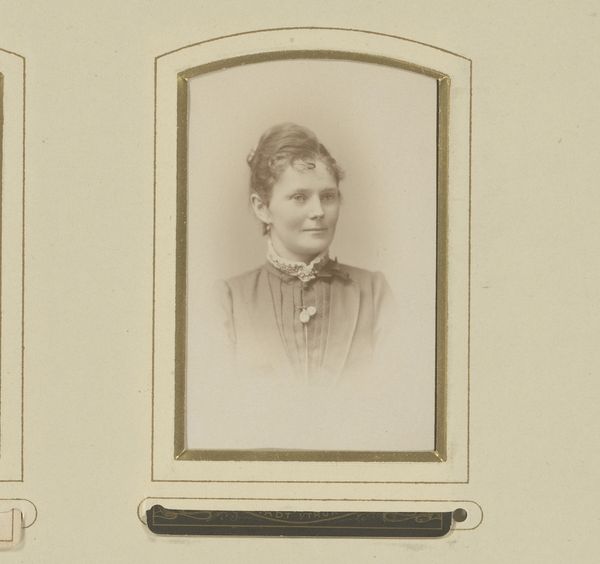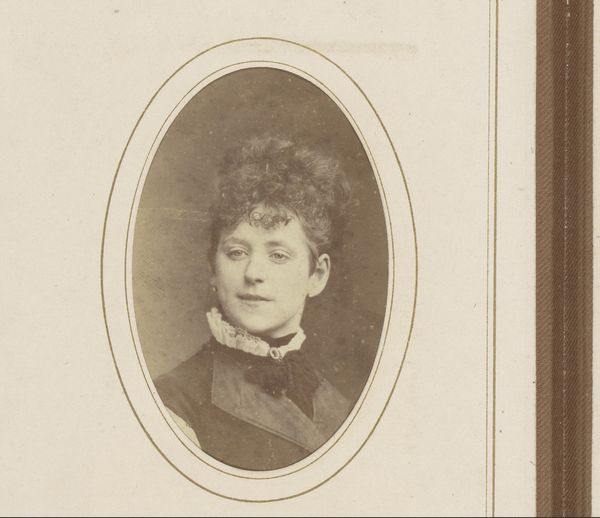
photography
#
portrait
#
charcoal drawing
#
photography
#
realism
Dimensions: height 83 mm, width 52 mm
Copyright: Rijks Museum: Open Domain
Curator: Ah, here we have "Portret van een vrouw met halssieraad," or "Portrait of a Woman with Necklace," dating from 1883-1884, currently residing here at the Rijksmuseum. It seems to be a photograph. Editor: She seems like someone’s mother. A lovely woman in her late 20's or early 30's, serious expression, kind eyes—like she knits little sweaters with embroidered bumblebees. Do you get a domestic vibe too? Curator: Yes, very much. The realism style captures a kind of quiet respectability, doesn't it? These photographic portraits became increasingly popular as a way for middle-class families to solidify their identity. Imagine albums filled with these little glimpses of lives! Editor: I'm immediately drawn to the oval frame—it softens everything, almost gives it a dreamlike quality. It also lends the portrait a certain old fashioned feel that can evoke nostalgia. Almost a romantic gesture, really, freezing a person’s likeness. Curator: Indeed. And the necklace—halssieraad—it is quite simple, isn't it? Probably something the sitter treasured. Objects like this also functioned as signifiers of class and status, of course. It’s a lovely example of the burgeoning culture of photographic portraiture and its integration into everyday life. Editor: You see it so analytically! And, I see what you mean. But, when I gaze at her, I want to imagine stories: her joys, hopes, or maybe a secret sorrow. Perhaps she just endured an argument or had exciting news, but whatever happened, there she is, forever immortalized. It’s about more than class structure for me, or…well, mainly that. Curator: Art always contains both dimensions, the personal and the historical, simultaneously. And portraiture offers us, really, the opportunity to speculate across time. Editor: So beautifully put! Looking at it this way does bring to the surface all kinds of human emotions that are universally relatable to this day. Curator: Exactly, and by seeing those reflections of ourselves, past and present, we get a better understanding of our time and place, in turn.
Comments
No comments
Be the first to comment and join the conversation on the ultimate creative platform.

